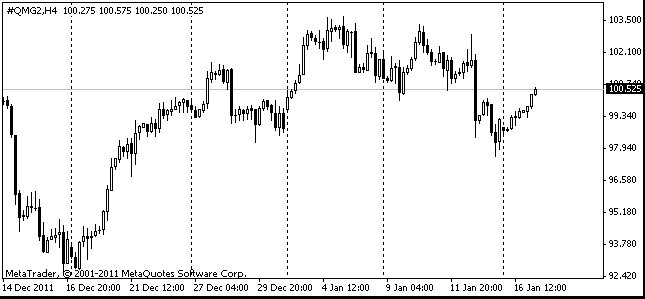EUR/usd
The euro-bears had enough courage, but no strength to test 1.29. On the disappointing Ifo Business Climate statistics the euro sank down to 1.2895. The Ifo index is considered to be one of the best health indicators for the largest EU economy. In September instead of the expected growth it fell down to 101.4, which is the lowest value since February 2010. It should be mentioned here that the falls of such amplitude (-13.7 points after the peak of 115.1 in February) very often forego the periods of economic contraction. Apparently, in the third quarter Germany won't be able to show a remarkable GDP performance as compared to other EU countries. If we look at the situation less globally, the intraday trading has been getting more cyclic lately. The single currency day by day faces heavy selling during trading in Asia, then consolidates in Europe and makes attempts to grow during the US session. Today the situation is again the same. Yesterday during the US session and before opening of trades in Tokyo, the single currency managed to grow above 1.2950 from the low of 1.2890. However, the slack trading in the Land of the Rising Sun caused selling of the euro – the pair hit 1.2885. Apparently, America is turning into the most optimistic part of the world as far as investor sentiments are concerned. Today we will see whether the US grassroots share this optimism as well. The release of the CB Consumer Confidence is scheduled for tonight. Since February with short breaks this index has been declining, however this time the market analysts are expecting a reversal of the trend. The struggle for 1.29 can hardly be considered finished, yet the more time goes by, the less chance the euro-bears stand, at least in the pair with the dollar. The Fed is putting a heavy pressure on the interest rates and investors are looking for more profitable markets outside the USA.

GBP/USD
GBP/USD is still consolidating. If you have a look at the daily charts, you'll see that in comparison with the impressive trend of the previous two months now it is really hard to discern how far the rates moved over the last day. The thing is that the current rates are at the same level as a day ago, three days ago and even eight days ago. Anyway, it's exactly the case when it is necessary to go on to stay put. It's all because in most crosses the British pound has significantly grown. The euro/pound continues to decline, coming closer to the levels of early September (as if draghi hadn't helped the euro at all!). Let's see how it will all settle, yet now it's hard to believe that the consolidation in such a narrow corridor will make the sterling-bulls strong enough to make a sure break above 1.63.

USD/JPY
The Japanese yen is making its way to below 78. The BOJ's bazooka has proved to be not really big (we've already talked about that) in comparison with the Fed's bazooka and the loaded (but not firing yet) gun of the ECB. The Japanese stock indexes have been listlessly dangling over the last three years after the huge drop in the preceding two. While The American exchanges have returned to the level of early 2008, the Japanese Nikkei, having dropped by 60% since then, is still 45% lower than 5 years ago. Under such circumstances it's very unlikely that investors will line up to borrow the yens to buy EUR, AUD or ZAR. The world is different now, especially for Japan.

oil
The caution of the stock markets has spread to the commodity ones. Thus Oil is trading in a rather narrow corridor after the drop by almost 10$ last week. The increase in the US oil production and reserves, a threat to unseal the strategic reserves of this country, growing production in Russia and the promises of Saudi Arabia to build up oil production if needed – all these factors significantly outweigh the geopolitical risks of the Middle East. And while traders don't see any effect of QE3, Oil remains under pressure.
